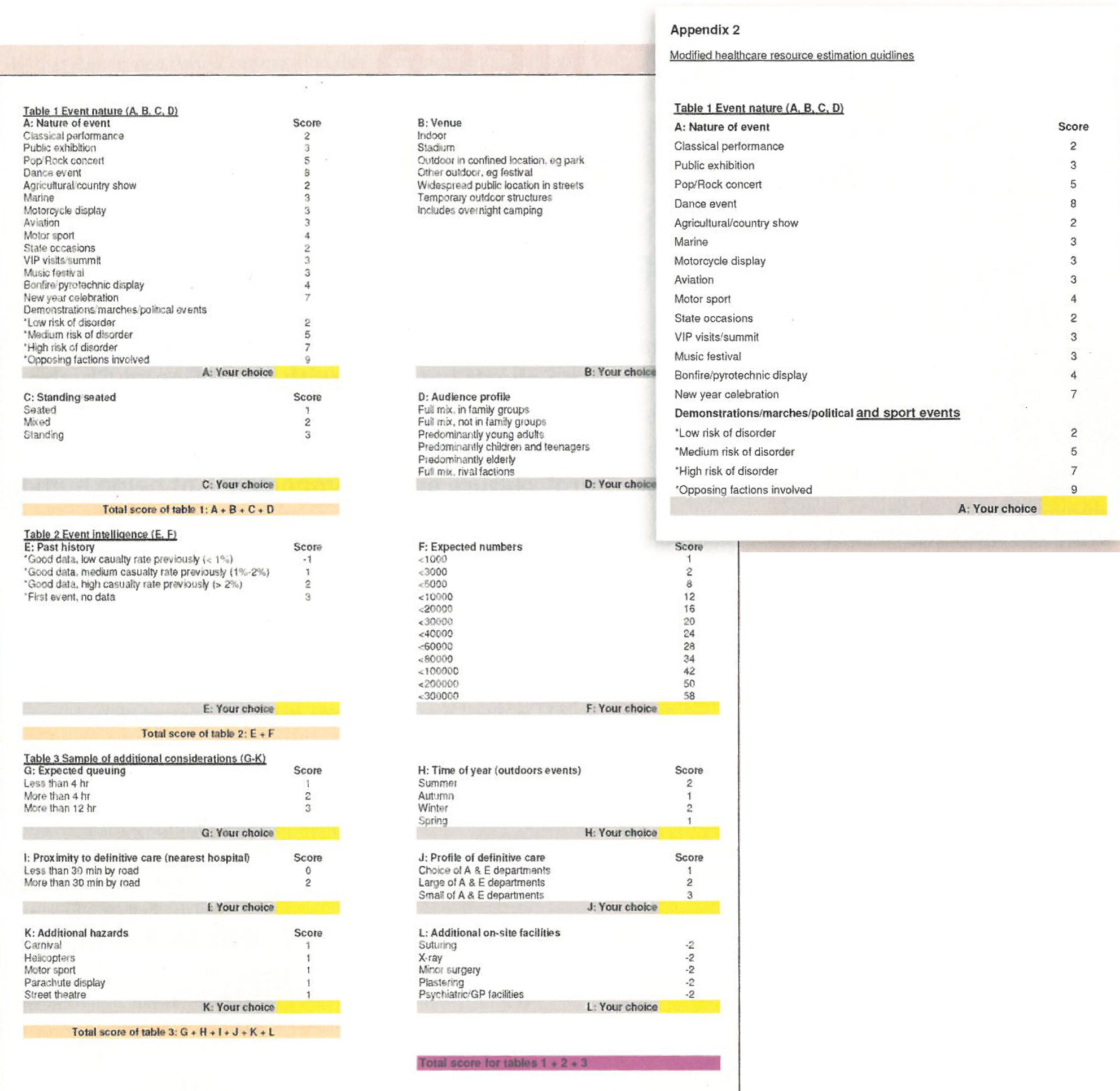ICU Management & Practice, ICU Volume 11 - Issue 3 - Autumn 2011
A Tool for Estimating the Needs of Healthcare Resorces at Sporting and Other Public Events
Co-authors
Amir Khorram-Manesh, MD, PhD
Annika H.E. Hedelin, RN
Per Örtenwall, MD, PhD
Sporting events have the potential to turn into major incidents. Thus, as part of the planning for such events, there should be an estimation of the needs for medical teams and healthcare resources based on a simple calculating method.
Different kinds of events are held in various locations around the world and under different geographical and weather conditions. Some are organised regularly and arranged by major event organisers with extensive experience, while others might be staged for the first time and by organisers with no experience of arranging events at all (Eisenhauer 2005). Besides economical benefits for the community and organisers, staging events also implies responsibilities to the visitors, some from cities or countries far away. Regardless of the type of event, what they have in common is a planned gathering of people with similar interests.
In planning, it is important to note that the larger the group of people, the greater the likelihood of someone suffering from an acute illness or minor injury that may require healthcare services and treatment. For each organiser, the primary goal, besides a well-organised event, should be the safety of participants, staff and spectators. Experiences from different events indicate that about 1-2% of the spectators will need some form of medical assistance and of those 10% will need further treatment, while about 1% require transportation to a hospital (Arborn 2007). Providing the best medical coverage may differ due to the type and location of this specific event. A crowd in itself poses an increased risk that an untoward event may develop into a major incident. Race cars crashing into spectator stands or crowd panic during soccer games are examples taken from different types of sports events when multiple fatalities and casualties have occurred (Eisenhauer 2005).
Thus, every event needs careful consideration regarding the need for medical coverage, both regarding "everyday illnesses", as well as the risk of a major incident occurring. The safety during an (major) event is closely correlated to crowd behaviour and control, aspects usually dealt with by police and stadium owners. Consequently, it is evident that planning for an event should be performed in close cooperation between the different stakeholders (organisers, police, healthcare system, fire service, etc.). Early communication between the different representatives is necessary to clarify the "risk profile" of the event and how to best deal with issues of concern. The medical needs during an event will be influenced by the anticipated number of spectators, geographical and climate conditions, as well as opposing fractions of spectators, etc. (Arbon 2005).
An easy-to-use tool for risk assessment and management would simplify this process. Various tools have been proposed, however, articles describing the use of such tools for different kinds of events are very limited. Arbon et al. developed an estimation method to assess the medical needs for sporting events (2004), while Milsten et al. described how eleven different factors with high impact on healthcare outcome should be taken into consideration (2002). However, since these methods are theoretical others have tried to use simplified models (Hartman et al. 2009).
Since we considered these systems too complex to use, we decided to use the British "Event Safety Guide", often referred to as "The Purple Guide" (2005) as a template (See Table 1 below). This guide is a comprehensive guideline intended to be used for concerts and other types of music events. A simple scoring system to calculate the medical resources for a given event is part of the guide. We used a revised version of this scoring system a couple of years ago to issue recommendations regarding health and safety during music events in Sweden. Therefore, we decided to find out if this template could be used also to estimate healthcare resources at sporting and other public events.

Table 1. Modified healthcare resource estimation guidelines (top right corner: one of the sections enhanced)
In a pilot study, we asked six experienced EMS planners to use the revised template for all upcoming events in their districts and evaluate its simplicity, usefulness, accuracy and also express their opinion if they would use such a template themselves. Since sporting events was not an available option in this template, they were asked to choose another activity (concert, festival, etc.), which was similar with regards to risk. The response was positive and in 97% of cases their assessment of resources needed with this tool corresponded to that made previous years of the same event. As a next step, we trained 27 experienced event planners to use the template. These participants were not involved in the pilot study described above. They were tested to confirm their knowledge and ability to use the template by letting them assess the need for medical resources in three non-sporting events (national day celebrations, festivals and concerts). In the original template, there are 12 different choices of events. One of these needs a risk assessment for the risk of disturbances at the events (marches/political; events/demonstration). The template was then adjusted to be used for sport events. By adding sport events into this category, the planner was forced to classify the event as low risk of interference, medium risk of disorder, high risk of disturbances and the risk for encounter between the rival groups. The scenarios used for sport events were trot, soccer /football and ice hockey. The results were in good accordance with resources usually deployed at such events. It was evident that the template might primarily be easier to apply to arena-based sport events as compared to events covering a larger geographical area (Rally racing, etc.). However, the most important factor for estimation of healthcare resources, irrespective of the type of events, is still the expected number of visitors (Khorram-Manesh et al. 2010).
In conclusion, the adjusted Swedish template used for estimation of healthcare resources at music events, can also after be used for other public events including sporting events. However, it is important that the person using the template has some experience from previous events and cooperates with other partners experienced in risk assessment (police, fire services, etc.).
References:
Arborn P. Mass-gathering medicine: a review of the evidence and future directions for research. Prehosp Disaster Med. 2007; 22: 131-135.
Arbon P. Planning medical coverage for mass gatherings in Australia: What we currently know. J Emerg Nurs 2005; 31: 346-50.
Arbon P. The Development of Conceptual Models for Mass-Gathering Health. Prehospital and Disaster Medicine, 2004:19:208-212.
Eisenhauer S. Sports Events and Risk Management in New Zealand: How safe is safe enough. Degree of Master in Tourism. University of Otago; 2005.
Hartman N, Williamson A, Sojka B, Alibertis K, Sidebottom M, Berry T, Hamm J, O´Connor R, Brady W. Predicting resource use at mass gatherings using a simplified stratification scoring model. Am J Emerg Med 2009; 27: 337-343.
Khorram-Manesh A, Berner A, Hedelin A, Örtenwall P. Estimation of healthcare resources at sporting events. Prehosp Disaster Med. 2010 Sep-Oct;25(5):449- 55.
Milsten A, Maguire B, Bissell R, Seaman K. Mass-Gathering Medical Care: A Review of the Literature. Prehospital and Disaster Medicine, 2002:17:151-162.
The Event Safety Guide, HSE Books 2005, ISBN 0-7176-2453-6






